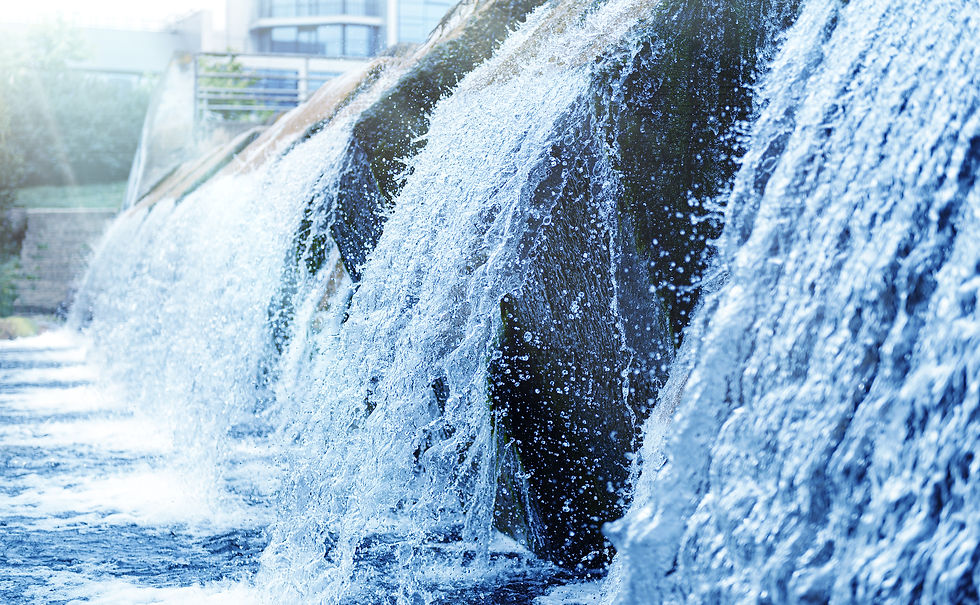Is Your Facility Compliant?
- Tom Petersen

- Jun 1, 2007
- 4 min read
Updated: Aug 28, 2023
It can be difficult to prioritize your efforts in environmental compliance. The first article in this month’s post will help you sort this out.
Click here for details about our FREE environmental seminar for colleges, universities, and hospitals scheduled for September 12, 2007.
If you need assistance please don’t hesitate to contact us and if you have a quick question you can always contact The Wizard.
Thanks for reading … Tom Petersen
——————–
How Can I Ensure Compliance?
With so many regulations out there, so many details to follow-up on and limited time and money, it can be hard to know where to focus your time. Should you be out making sure the construction at your site is complying with the stormwater BMPs in your permit, checking if the labels on your hazardous waste meet the letter of the law or studying all those e-notices that come your way to make sure nothing new is coming? There are many things to consider when prioritizing your time:
Understand your facility: It is important to understand the materials and processes at your facility as well as how to work within your company to ensure compliance. Based on your understanding of materials and processes, it is possible to identify what regulations impact your facility and audit your site against these regulations. Understanding your company’s organization and how to work within it can help you develop effective compliance systems. For example, operators are more likely to complete required documentation if it is part of an existing checklist and they are more likely to make Environmental compliance a priority if the plant manager makes it a priority. An effective compliance system is the key to having confidence in your site’s compliance and to ensuring issues are identified before they become a violation.
Understand your regulators: Another thing to consider is what your regulators consider important. EPA’s Office of Enforcement and Compliance Assurance (OECA), tracks its accomplishments based on their National Priorities for Enforcement and Compliance Assurance. The EPA periodically updates their priorities and allows for comment and input from stakeholders. A proposal, which received general support, was issued this past February (see link at end of summary) and it is likely to be issued final this summer. If your facility is impacted by any of these areas, it would be good to make compliance in that area a priority.
Clean Water Act: Stormwater, Combined Sewer Overflow, Sanitary Sewer Overflow, and Concentrated Animal Feeding Operations
Clean Air Act: NSR/PSD, Air Toxics (MACT standards)
RCRA & CERCLA: Financial Assurance
RCRA: Mining and Mineral Processing
Tribal Areas
Also consider where your regional EPA office has taken enforcement action recently. Recent citations and agreements in EPA Regions 2 and 3 focus on the following areas: Underground storage tanks: Violations at gas stations. Fines ranging from $29,000 to $3.1 million.
Lead-based paint: Multiple violations of lead-based paint disclosure requirements. Fines range from $1000-$50,000.
Pesticides: Issues with application, registration, labeling and use. Fines ranging from $6,450 to over $1 million Asbestos: Violations for improper abatement.
Build strong relationships with regulators: Having good relationships with the state inspectors who routinely come to your facility goes a long way towards keeping your facility in compliance and out of the headlines. If you are open, honest and respectful of their time, then they will trust what they see and be less inclined to go fishing for issues. Below are some good policies to foster trust with your regulators:
Notifications: Find and promptly report issues. Even if it is to let them know you are doing an investigation and that you’ll provide more details later, it is good policy to keep regulators aware. Also, err on the conservative side when reporting issues. For example, if you report even the small releases of non-toxic materials, the regulator will trust that you’ll let them know about the larger releases. Also, following EPA’s self disclosure rule (see next section) will reduce the enforcement impact.
Inspections: Be positive and friendly when an inspector visits and ensure whoever escorts them around is knowledgeable and able to promptly answer most of their questions. If an issue arises where you and the inspector don’t agree, calmly make your case and spend time trying to understand their perspective.
Reports & Information Requests: Submit reports on-time and respond to information requests promptly. When delays occur, ensure the inspector understands there is a valid reason for the delay. Also, spend time preparing the reports so it is easy for the regulator to follow. They have limited time and easy to read and complete reports engender good will.
EPA’s Incentives for Self-Policing: Discovery, Disclosure, Correction and Prevention of Violations
EPA’s goal is to protect the environment, not issue fines for violators. Therefore, they’ve developed incentives to encourage facilities to self-disclose violations promptly. This includes no gravity based penalties for violations found through a self-audit or compliance management system. Therefore, we recommend that you conduct periodic audits and develop compliance systems to help ensure issues are identified. Audits can be done in-house or by a third party.
Ensuring compliance can be a challenge, particularly if your environmental department is understaffed. EES has experience completing audits of facilities for the full range of environmental regulations as well as developing compliance systems. Feel free to contact us with your environmental needs.
Related Links: EES post dated July 2005 regarding environmental, health and safety compliance audits: EES post – July 2005 EPA National Enforcement and Compliance priorities (proposal) OECA’s 2006 Accomplishments Report
Number 39 part 1



